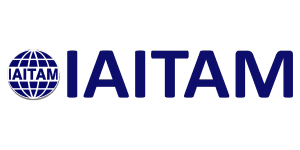Dumped by your ITAD Provider? Lessons Learned from an Expert

The recent announcement by Arrow Electronics to “wind-down (its) personal computer and mobility asset disposition business” comes as a shock to many in the industry, including myself. Arrow was recognized as a market leader that grew by acquiring some of the best independent ITAD processors in the industry. Arrow isn’t the only one that’s exited the business and left its clients hanging – others have gone bankrupt, closed facilities, or have had executives charged with criminal offenses.
Arrow sent an announcement to its customers one day after the investor meeting on July 15th declaring that “July 22 will be the last day for pickups to be arranged, and August 5 will be the last day we will receive assets at our facilities.” That’s not much time for organizations to pivot to a new solution. Also, holding onto retired IT assets while a new solution is found creates more security risk and erodes the value of these assets. Meanwhile, the old equipment keeps piling up, taking up more valuable space.
What can organizations affected by this change do to mitigate their risk and respond quickly and appropriately? What are some of the lessons learned from the Arrow announcement that we can all use to better prepare IT Asset Managers and their organizations?
To answer these questions, I reached out to Kyle Marks, CEO of Retire-IT. Kyle is uniquely qualified to provide expert advice in the wake of Arrow Electronics’ announcement. He could be considered a disposition “Sherpa” – a trusted adviser, guiding clients to which paths to take, areas to avoid, risks to be aware of, and overcoming unforeseen challenges that may occur. Over the past 15 years he has managed more than 10,000 disposal projects, many involving Arrow Electronics. Kyle has not only been a long-term client of Arrow, he served in Arrow Electronics as President of US Micro to lead post-acquisition integration efforts. Kyle is the founder of Retire-IT a consulting firm specializing in ITAD management. Kyle has an MBA from Harvard and is also an IAITAM CHAMP.
Neil Peters-Michaud: What is your experience with Arrow from the perspective of working in the ITAD business and being a customer of theirs?
Kyle Marks: My experience has varied significantly with Arrow over the years. Overall, however, it has been very positive, or we would not have used them. We never actually chose Arrow as a vendor. We had strong relationships with several companies that Arrow ultimately acquired. The teams we worked with at Intechra, Asset Recovery Corp, etc., were excellent operators and provided wonderful service. We valued these companies, so it was understandable why Arrow acquired them, and we continued to use them. It was no secret that Arrow struggled to integrate the eleven acquisitions. Naturally, it can be a challenge for any organization to combine different cultures, systems, and business models together. Many clients, like us, stuck with Arrow through the tough times and were recently enjoying dramatically improved performance. After waiting for these operational improvements, learning of the shut-down from a press release was honestly very disappointing.
NPM: Did you notice any warning signs that Arrow was going to exit this business? What should organizations watch out for to see if their service provider may be in trouble or changing their strategy?
KM: There are several red flags we watch out for that can be early indicators of problems. When a vendor has employee turnover, reports are late or inaccurate, or they become unresponsive, we take precautions. In the case of Arrow, the only warning sign seemed to be turnover at the leadership-level that started a little more than a year ago. Ironically, in the past 18-months, Arrow’s reporting accuracy improved, SLAs timing metrics improved, and invoicing accuracy improved.
NPM: What immediate actions should Arrow customers take to manage this “crisis”?
KM: First and foremost, do not make a rush decision. Making a hasty decision might mean jumping from the frying pan into the fire. Arrow issued an update stating “Arrow’s top priority is to help ensure a smooth transition” for customers. If you have assets at Arrow, or asset in-transit to Arrow, work with your account team. If you have a pickup of assets pending, consider an alternative course of action.
NPM: How do clients get dependent on their ITAD vendor and what risks does this present?
KM: We grow dependent on a vendor when we become complacent or we take the wrong approach. Vendors realize that once a business implements their process and becomes accustomed to their systems, it becomes difficult for a client to switch. Switching costs permit vendors to provide poor service, raise prices, and neglect our requests. Overdependence on a vendor creates risk.
NPM: What can organizations do to better insulate them from the risk of an ITAD vendor leaving the business?
KM: The number one thing a business can do to shield them from ITAD vendor risk is design a consistent management approach that is vendor-neutral. You should have programs, policies and tools in place where you control the process for IT asset disposal that could then be transferred to other vendors should you need to switch.
Also, prepare a plan to change vendors – your business continuity plan for ITAD. Preparing will pay dividends for your ITAM program regardless if you make a switch or not. Preparing and sharing a plan will help identify gaps in current procedures and gain buy-in from senior management. Whether you switch or not, at least you will feel confident you can. You will be empowered to hold vendors accountable instead of being held hostage.
Developing a vendor-neutral approach will ultimately save you time, better ensure compliance and future-proof your ITAD program. Remember, your process should not change when you switch vendors, decide to work with multiple vendors, or when once trusted vendors go bust.
